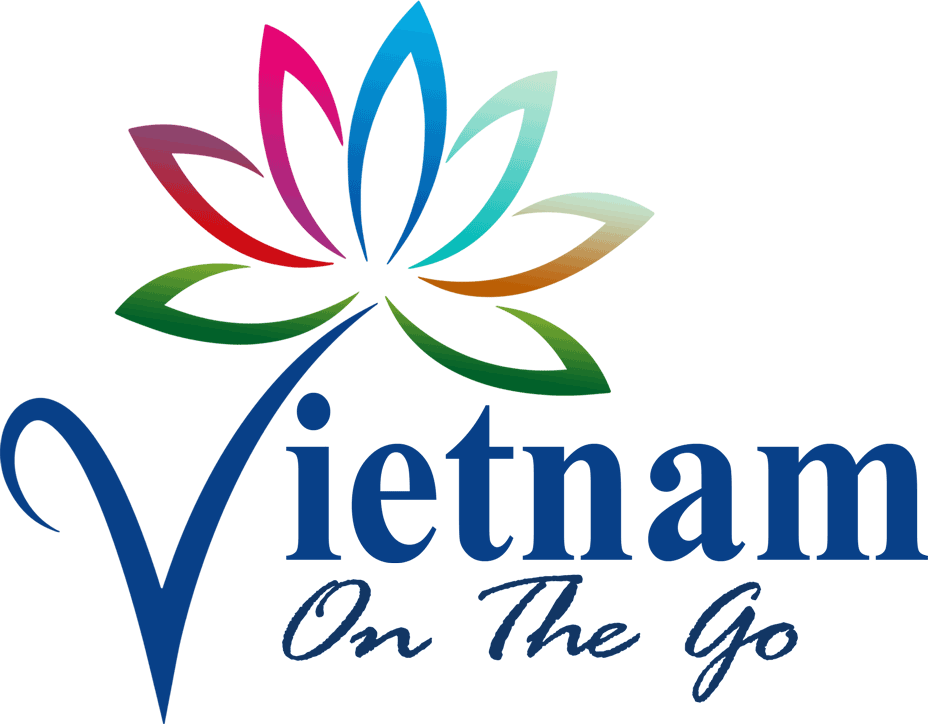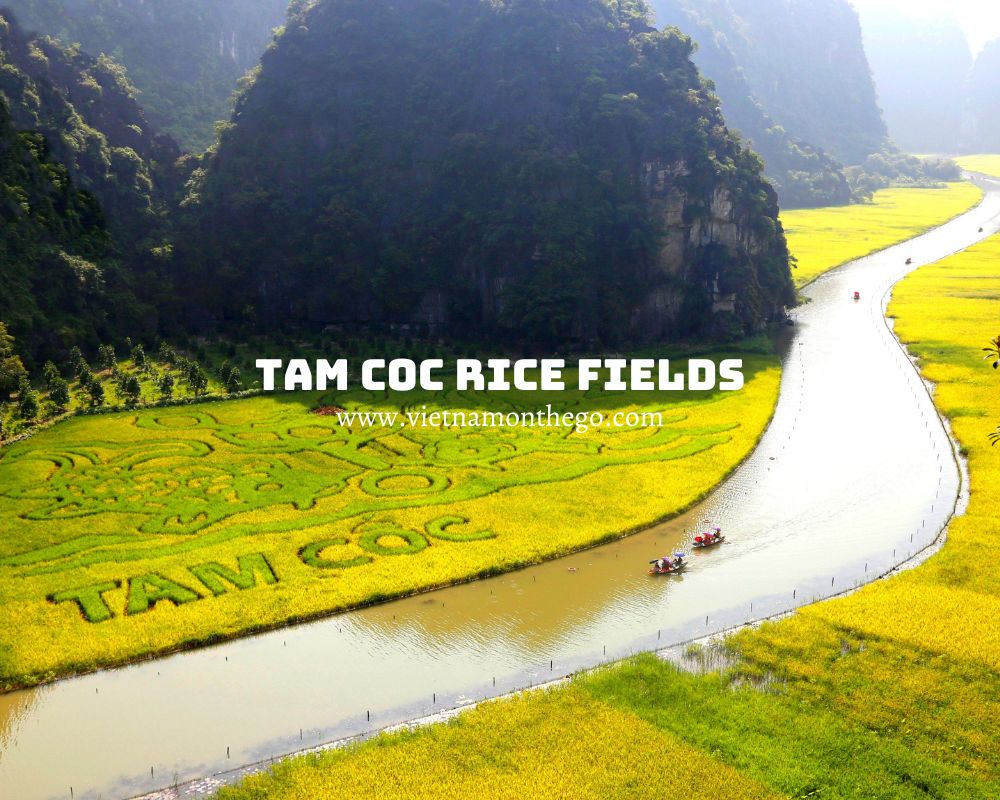Travel Guide, Ninh Binh
A Comprehensive Guide to Exploring Tam Coc Rice Fields
In the heart of Vietnam’s Ninh Binh, the Tam Coc rice fields are a mesmerizing landscape that seems almost too beautiful to be real. This picturesque region, often referred to as the “Halong Bay on land,” offers a peaceful escape into nature, where the only sounds you’ll hear are the gentle flow of the Ngo Dong River and the soft rustle of rice stalks in the breeze. Let’s explore their natural beauty, cultural significance, and the various ways you can experience this magical place.
When to Visit
The Tam Coc rice fields in Vietnam’s Ninh Binh province are a stunning natural attraction, offering spectacular views that vary dramatically with the seasons. To experience the area at its most beautiful, it’s essential to choose the right time for your visit.
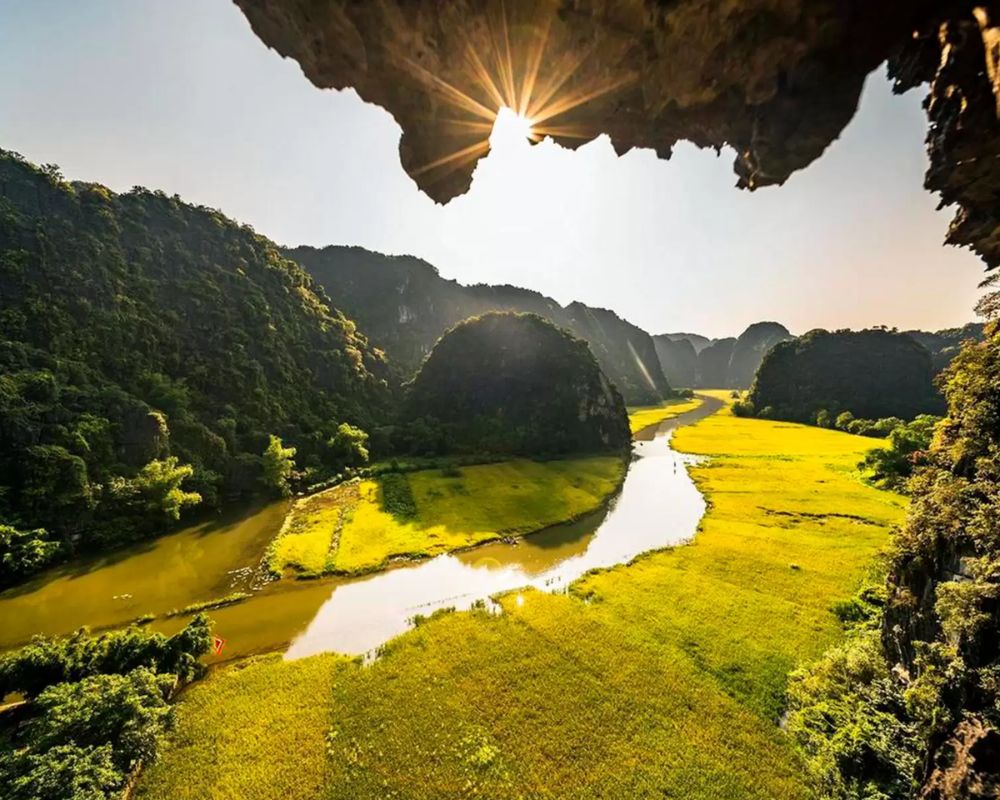
Best Times to Visit
- Late May to Early June: This period is often considered the best time to visit the Tam Coc rice fields. During these weeks, the rice paddies are at their lushest, displaying vibrant shades of green just before the harvest period begins. The weather is warm, and the scenery is picture-perfect, making it ideal for photography and leisurely boat rides.
- September to October: Another excellent time to visit is during the harvest season, when the rice fields turn a golden yellow, creating a stunning contrast with the emerald green waters of the Ngo Dong River and the towering limestone karst formations. The cooler temperatures and less frequent rainfall make outdoor activities like biking and hiking through the countryside exceptionally pleasant.
Other Considerations
- February to April: The spring months mark the beginning of the rice planting season. The landscape during this time is characterized by calm waters and green, but not yet fully matured, rice paddies. While not as visually dramatic as the peak season, the fewer tourists make for a more peaceful experience.
- November to January: The winter months see cooler temperatures and a more subdued landscape after the harvest. This is the least crowded time of the year to visit, offering a different perspective of Tam Coc’s beauty, with misty mornings that add a mystical aura to the limestone mountains.
How To Get To Tam Coc to Explore Rice Field
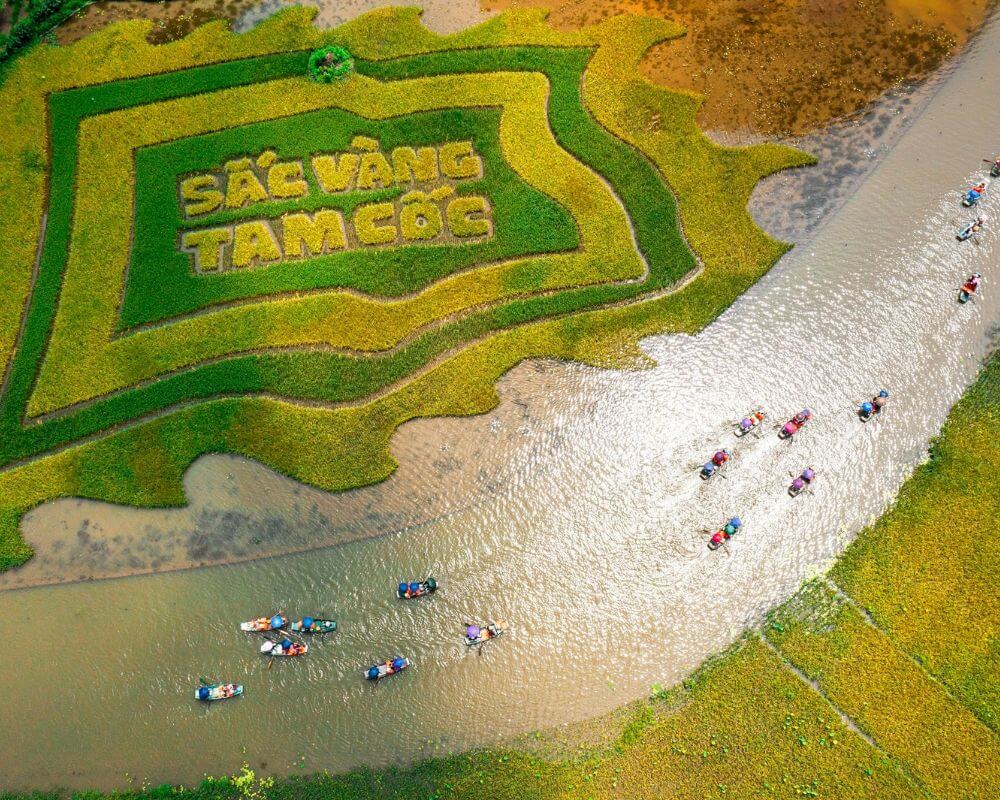
From Hanoi, there are multiple ways to reach Tam Coc. Travelers can go by car, their own motorbike, or by bus, following National Highway 1A, as Ninh Bình is only about 110 kilometers from the city center.
Upon arrival at Văn Lâm pier, visitors can purchase tickets for the tour at a price of 120,000 VND per person per trip. Afterwards, they can buy boat tickets at a rate of 150,000 VND per trip for a boat with 4 Vietnamese passengers and 150,000 VND per trip for a boat with 2 foreign passengers, with children under 3 years old free of charge. Then, they board the boat and cruise along the Ngo Đong river, commencing their exploration journey. It takes approximately three hours to fully explore Tam Coc.
The Natural Splendor of Tam Coc
Tam Coc, located in Ninh Binh province, Vietnam, is known for its mesmerizing natural splendor. Often referred to as the “Halong Bay on land,” Tam Coc showcases a unique landscape of limestone karst formations, lush greenery, and winding waterways, creating a picturesque setting that captivates visitors.
The main attraction of Tam Coc is the breathtaking boat ride along the Ngo Dong River. Traveling by traditional sampan boats, visitors are taken on a serene journey through a series of caves and stunning rice paddies. As you glide along the river, you’ll be surrounded by towering limestone cliffs covered in vibrant vegetation, which create an awe-inspiring backdrop.
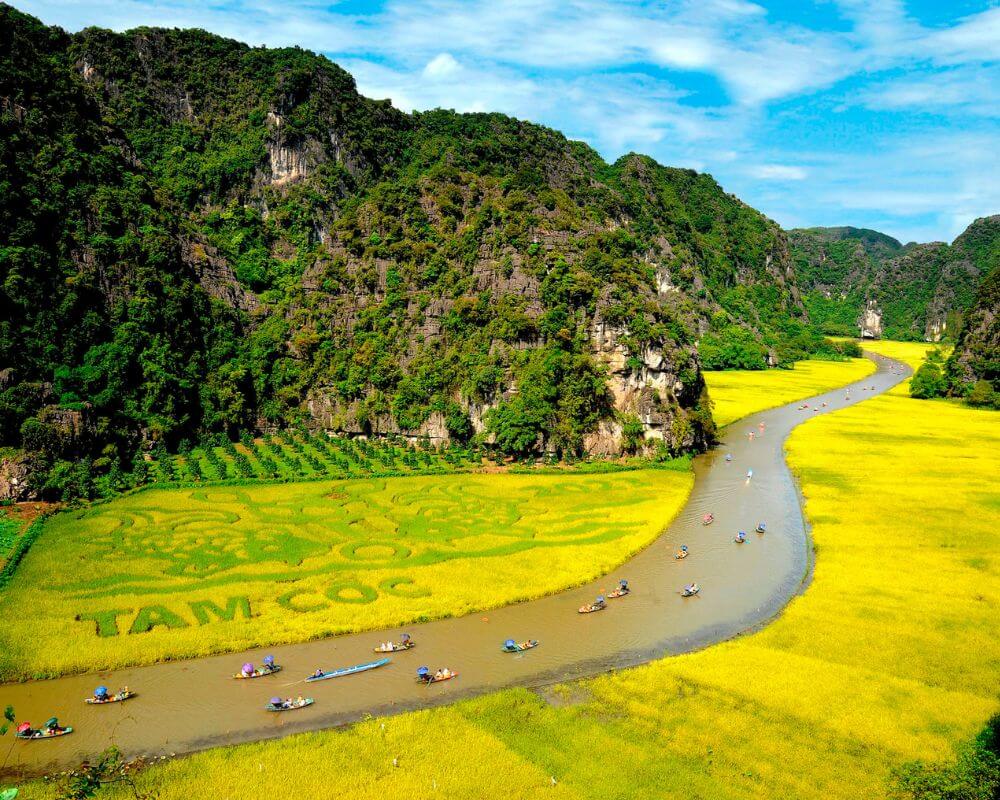
Tam Coc translates to “Three Caves,” consisting of Hang Cả (First Cave), Hang Hai (Second Cave), and Hang Ba (Third Cave). All three caves are formed by the erosion of the river flowing through the limestone mountains in this area.
Hang Ca is the largest and longest cave within the Tam Coc cave system, measuring 127 meters in length, penetrating through a large part of the mountain, with an entrance width of over 20 meters. Inside the cave, the climate is cool and humid, with numerous stalactites hanging down in various shapes.
Hang Hai is a smaller cave, with a length only half that of Hang Cả, approximately 60 meters long, and located about 1 kilometer away from Hang Cả. The cave’s ceiling is adorned with many beautiful stalactites, rivaling those found in Hang Cả.
Hang Ba, although the smallest in size at just 50 meters long, is considered the most beautiful of the three caves. Here, one can imagine being under a stone arch crafted skillfully by nature, with intricate details creating a unique and magnificent beauty, making Hang Ba truly exceptional.
One of the highlights of the Tam Coc experience is passing through the rice fields that stretch along the riverbanks. Depending on the time of year, the fields transform into different shades of green, gold, or even vibrant yellow during the harvest season. The sight of farmers tending to their crops, with the limestone cliffs looming in the background, creates a postcard-perfect scene that is truly captivating.
Apart from the boat ride, Tam Coc offers other activities for nature enthusiasts. You can rent a bicycle and explore the surrounding countryside, discovering quaint villages, pagodas, and limestone caves on your own. The area is also a popular destination for trekking and hiking, with trails leading to viewpoints that offer panoramic vistas of the region’s natural beauty.
The unique geography of Tam Coc has created a biodiverse ecosystem, home to various plant and animal species. This natural splendor has not only made it a popular destination for eco-tourists but has also earned it a place on the UNESCO World Heritage list as part of the Trang An Landscape Complex.
Cultural Insights and Historical Significance
The rice fields of Tam Coc are a testament to Vietnam’s rich agricultural heritage. Rice cultivation has been a fundamental part of Vietnamese culture for centuries, providing sustenance and shaping the way of life for its people. The fields in Tam Coc showcase the traditional methods and techniques used in rice farming, reflecting the agricultural practices passed down through generations.
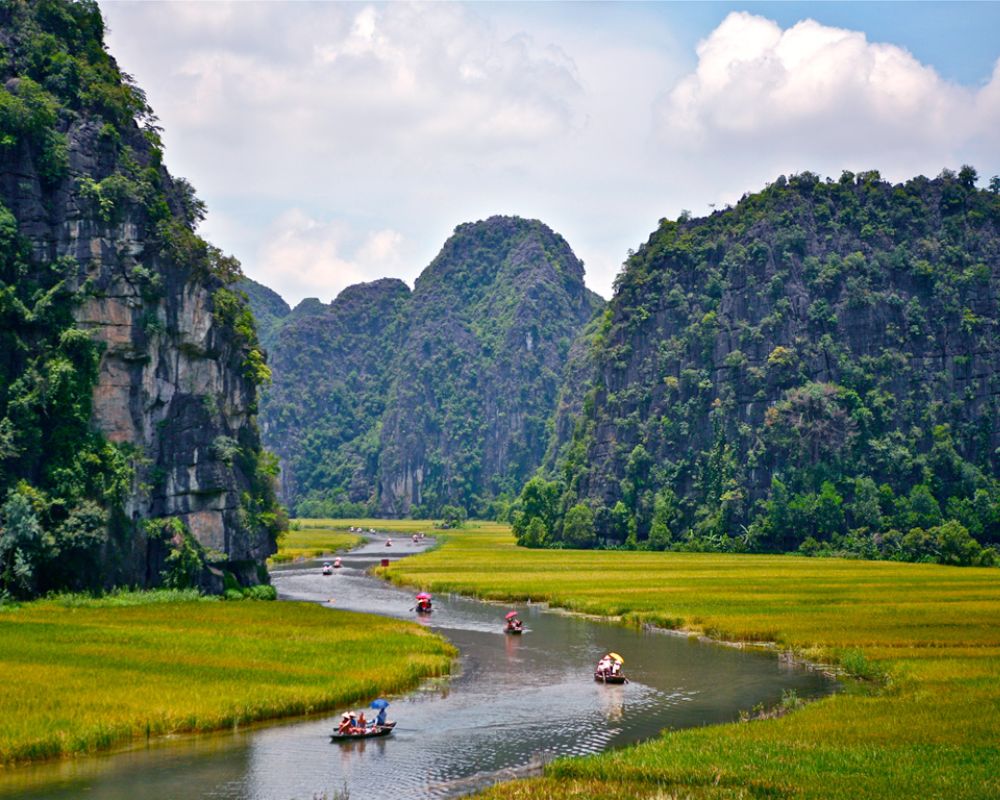
Rice holds deep cultural symbolism in Vietnam. It is considered the staple food and a symbol of abundance, prosperity, and fertility. The lush green rice fields of Tam Coc represent the country’s agricultural abundance and the hard work of farmers who toil the land to provide for their families and communities.
Tam Coc and its rice fields are situated in the vicinity of Hoa Lu, the ancient capital of Vietnam during the Dinh and early Le dynasties (10th and 11th centuries). Hoa Lu was a center of political, cultural, and economic activities at that time. The rice fields of Tam Coc were crucial in supporting the capital’s population and played a significant role in the region’s historical development.
The rice fields in Tam Coc showcase traditional farming practices that have been preserved over the years. Farmers still use manual labor and traditional tools for planting, cultivating, and harvesting rice. This preservation of traditional farming methods provides an opportunity to understand the agricultural heritage of Vietnam and the hard work that goes into rice production.
They are integral to the local communities living in the area. They provide a source of livelihood for many families, and the rice farming season is a time of community engagement and cooperation. During the harvest season, you may witness locals participating in activities such as harvesting, threshing, and drying rice, further connecting visitors to the local way of life.
Read More: BEST 9 Things To Do In Ninh Binh
Experiencing the Tam Coc Rice Fields
Boat Ride along the Ngo Dong River
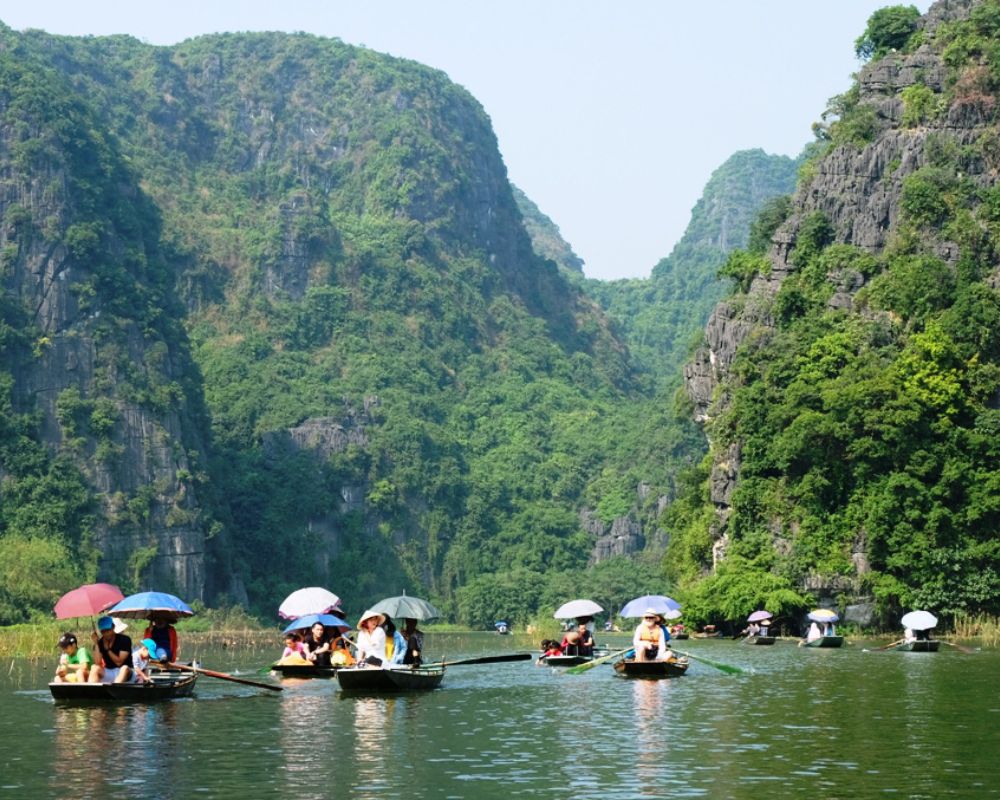
Start your experience with a boat ride along the Ngo Dong River, which meanders through the rice fields and limestone karst formations. Sit back and relax as local boatwomen skillfully navigate the waterways, taking you through the captivating landscape. Marvel at the towering limestone cliffs, lush greenery, and the rhythmic motions of the farmers working in the fields.
Explore the Three Caves
As you cruise along the river, you’ll pass through the three natural caves of Hang Ca, Hang Hai, and Hang Ba. These caves add an element of adventure to your journey, with their intriguing rock formations and stalactites. Take in the coolness and tranquility inside the caves and appreciate the natural wonders that have been shaped over thousands of years.
Cycle through the Countryside
Rent a bicycle and embark on a leisurely ride through the surrounding countryside. Pedal along the narrow paths that wind through the rice fields, passing by charming villages, pagodas, and local homes. This allows you to immerse yourself in the rural atmosphere and observe the daily lives of the local people.
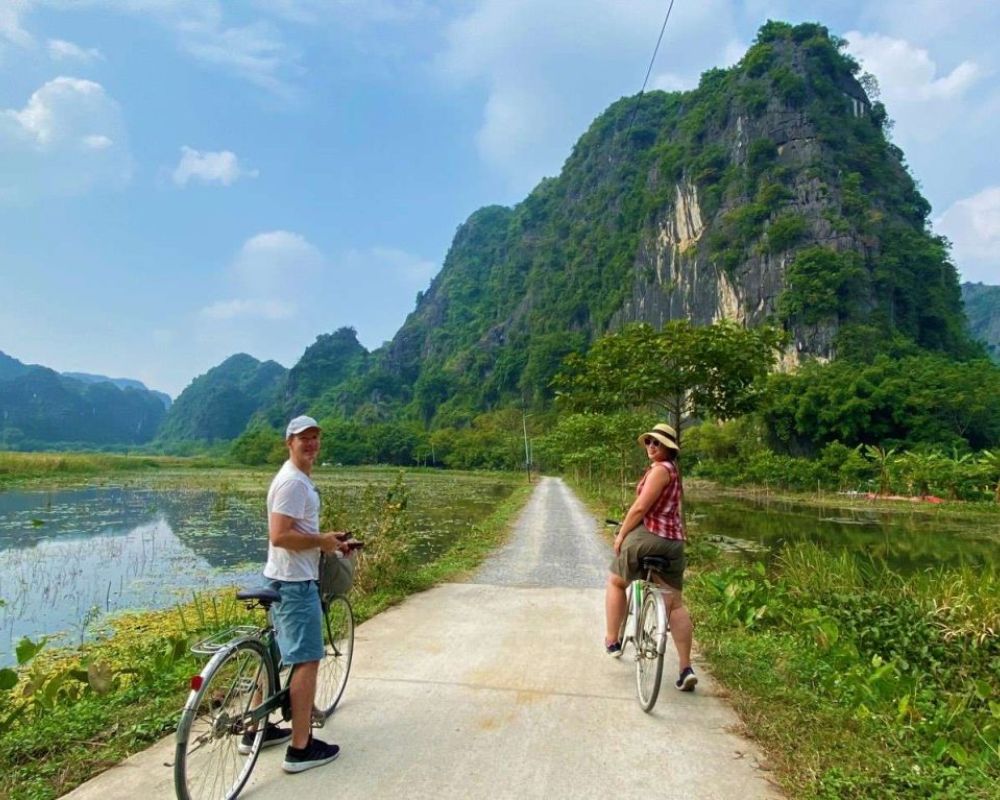
Suggested cycling route + itinerary in Tam Coc:
7:00am: Begin your cycling adventure from Tam Coc Town, where you can rent bicycles from local shops or your accommodation. Make sure to wear a helmet and carry water and snacks for the journey.
8:00am: Cycle south from Tam Coc Town towards Bich Dong Pagoda, which is approximately 3 kilometers away. This ancient pagoda is nestled amidst limestone cliffs and offers panoramic views of the surrounding rice fields. Park your bicycle and take a short walk up to the pagoda to explore its three levels.
10:00am: From Bich Dong Pagoda, continue your journey south for about 5 kilometers to Thung Nham Bird Garden. This peaceful sanctuary is home to various bird species, including herons, storks, and egrets. Take a break here to enjoy the tranquility and observe the birds in their natural habitat.
11:30am: Cycle through the charming countryside, passing by small villages and local homes. You can take detours along narrow paths that wind through the rice fields, giving you an up-close view of the farming activities and the local way of life. Engage with the friendly locals and experience their warm hospitality. Have lunch!
1:00pm: Continue your cycling journey to Thung Nang, also known as Sunshine Valley. This scenic area is often referred to as the “Ha Long Bay on Land” due to its limestone karsts and winding waterways. Here, you can take a boat ride to explore the picturesque landscape, similar to the experience in Tam Coc.
3:00pm: After exploring Thung Nang, cycle back to Tam Coc Town, retracing your route. Take your time to enjoy the beautiful scenery, stop for photo opportunities, and soak in the peaceful atmosphere of the rice fields.
Capture the Scenic Beauty
The Tam Coc rice fields offer endless opportunities for photography enthusiasts. Capture the vibrant green hues of the rice paddies, the reflections in the still waters, and the striking contrast of the limestone karsts against the sky. Don’t miss the chance to capture the farmers in their iconic conical hats as they work in the fields, creating authentic and timeless images.
Sample Local Cuisine
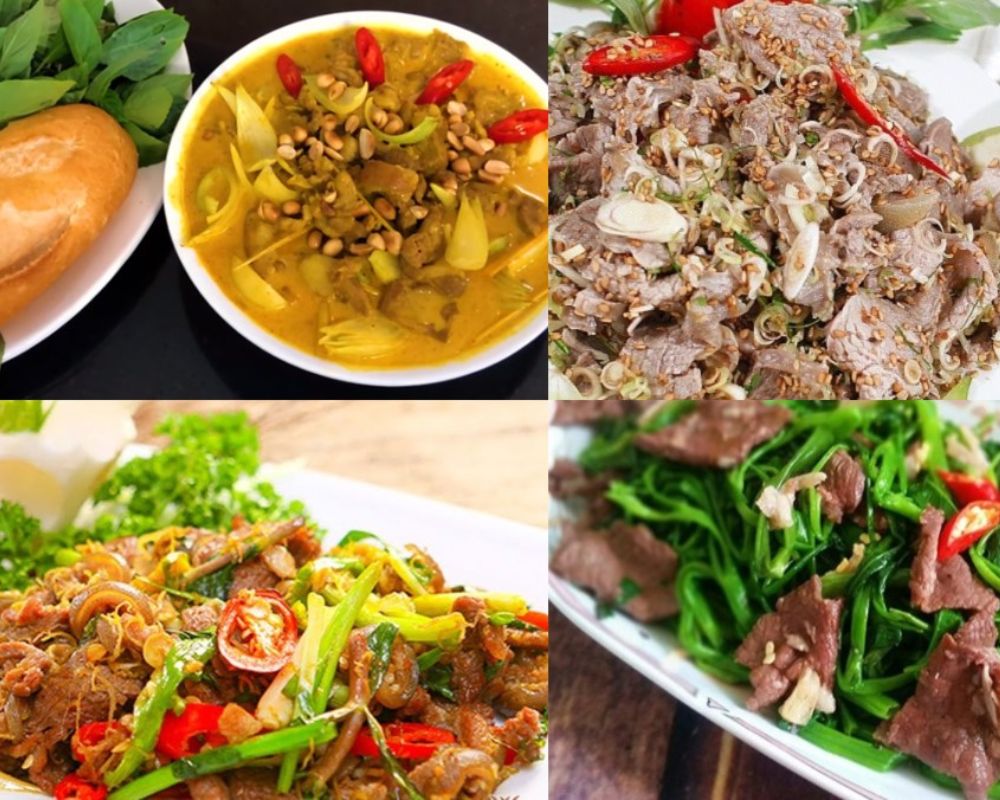
After exploring the rice fields, treat yourself to some delicious local cuisine. Tam Coc is known for its fresh and flavorsome dishes, particularly those made with local ingredients such as river snails, crispy rice, and mountain goat meat. Visit local restaurants or street food stalls to savor the authentic flavors of the region.
Best places to try:
An Tam Coc Restaurant & Coffee
- Address: Tam Coc Rd, Ninh Hải, Hoa Lư, Ninh Bình, Vietnam
- Opening Hours: 7:00am – 11:30pm
- Average Price: 150,000 – 3000,000/person
Canh Dieu Tam Coc Restaurant
- Address: Ninh Hải, Hoa Lư District, Ninh Bình, Vietnam
- Opening Hours: 8:00am – 11:00pm
- Average Price: 100,000 – 200,000/person
Tam Coc Memory Restaurant
- Address: Ninh Hải, Hoa Lư District, Ninh Bình, Vietnam
- Opening Hours: 7:30am – 11:00pm
- Average Price: 150,000 – 250,000/person
Tam Coc Goat restaurant & coffee
- Address: Tuân Cáo, Ninh Thắng, Hoa Lư, Ninh Bình 08200
- Opening Hours: 7:00am – 10:30pm
- Average Price: 100,000 – 250,000/person
Trek to Viewpoints

For those seeking a more active adventure, consider trekking to viewpoints that offer panoramic vistas of the Tam Coc landscape. Hike up nearby hills or climb to viewpoints such as Hang Mua Peak, which provides a stunning bird’s-eye view of the rice fields, river, and limestone formations. This allows you to appreciate the vastness and beauty of the region from a different perspective.
Engage with Local Communities
Take the opportunity to interact with the local communities around Tam Coc. Visit a local village or participate in activities like traditional craft demonstrations, farming experiences, or cooking classes. Engaging with the locals provides a deeper understanding of their way of life and fosters cultural exchange.
FAQs
How do I get to Tam Coc rice fields?
Tam Coc is approximately 100 kilometers (62 miles) south of Hanoi, the capital city of Vietnam. The most common way to reach Tam Coc is by taking a bus or private car from Hanoi. The journey takes around 2-3 hours, depending on traffic conditions. Alternatively, you can also join organized tours that include transportation to Tam Coc.
Can I walk or cycle through the rice fields?
Yes, you can explore the rice fields in Tam Coc on foot or by bicycle. There are designated paths and small roads that allow visitors to walk or cycle through the fields, providing an up-close experience of the stunning scenery. Renting a bicycle is a popular option, and some accommodations or local shops offer bicycle rental services in Tam Coc.
Are there boat rides in Tam Coc rice fields?
Yes, boat rides are a popular way to explore the Tam Coc rice fields. The boat rides typically take place along the Ngo Dong River, which meanders through the rice fields, passing beneath limestone karsts and through scenic caves. The boat rides are operated by local rowers who use their feet to propel the boats. It’s a serene and picturesque experience.
What else can I do in Tam Coc besides visiting the rice fields?
In addition to exploring the rice fields, Tam Coc offers various other attractions and activities. You can visit Bich Dong Pagoda, a series of ancient Buddhist temples built into a mountainside, or explore the nearby Trang An Landscape Complex, a UNESCO World Heritage site with stunning karst landscapes and cave systems. Cycling, hiking, and enjoying local cuisine are also popular activities in the area.
Conclusion
The Tam Coc rice fields are a testament to the natural beauty and cultural richness of Vietnam. Whether you’re seeking adventure, tranquility, or simply a chance to connect with nature, Tam Coc offers an experience that is both profound and unforgettable. So pack your bags, and prepare to be captivated by the serene beauty of this Vietnamese jewel.
